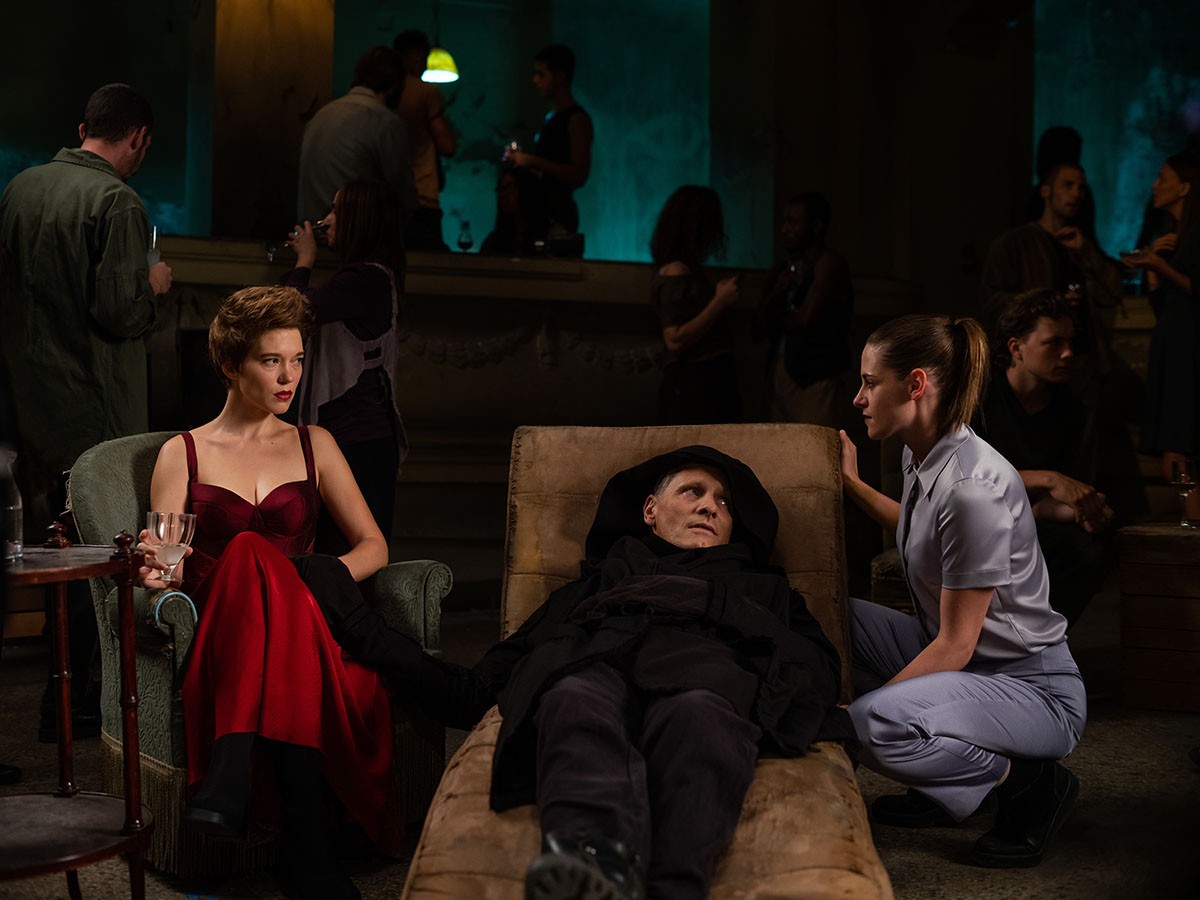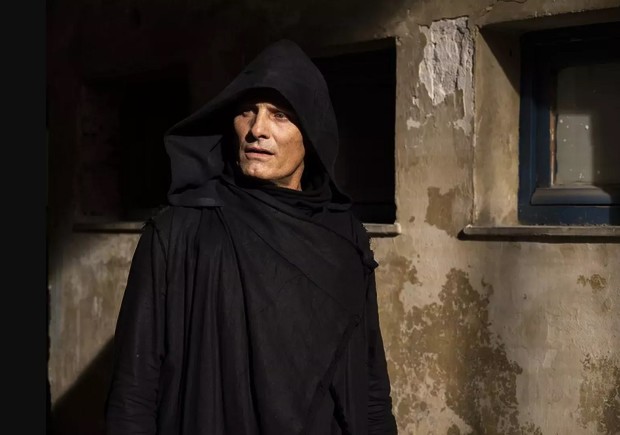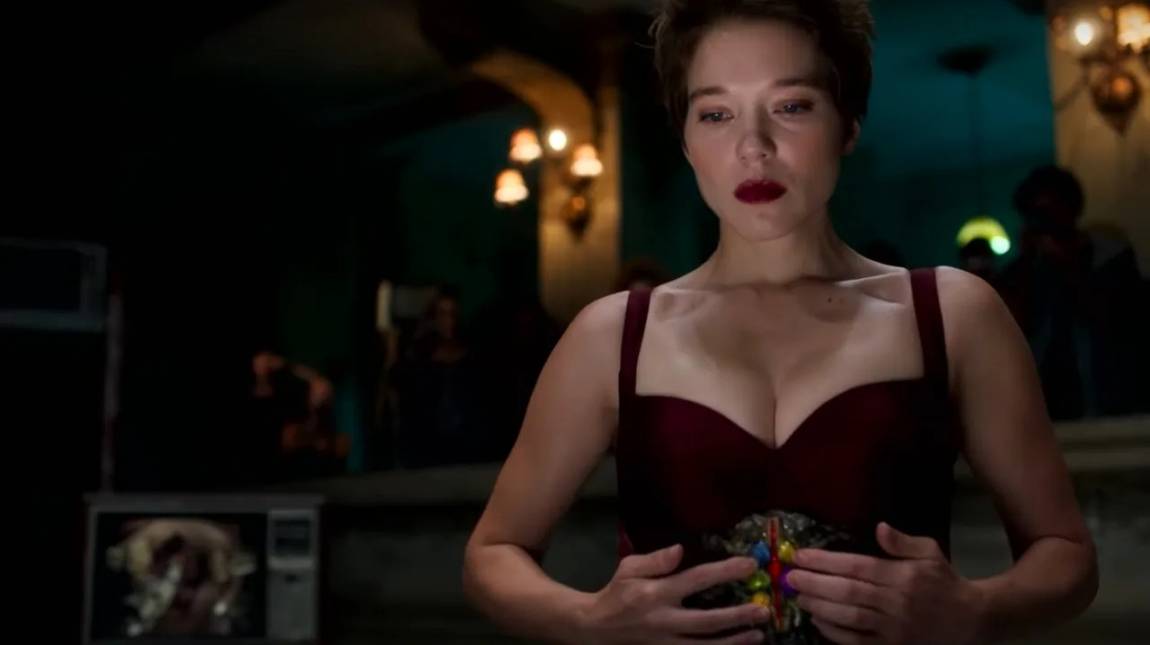Crimes of the Future is David Cronenberg’s heralded return to the body-horror sub genre, combining modern themes with the type of outside-the-box filmmaking that first earned him a cult following.
David Cronenberg has unfinished business with the future. Or so he said in the theatrical introduction to Crimes of the Future. I believe him because he is returning to the realm of science-fiction horror that he hasn’t explored since 1999’s trippy eXistenz. It’s the type of cautionary tale which first made him famous, but blended with the more grounded sensibilities he has experimented with in his more recent releases.
The film takes place in an indeterminate future in which human evolution has almost eliminated pain and infection. As a result of this change, people have begun to modify their own bodies. Saul Tenser and his partner Caprice are artists, who perform surgeries to remove mysterious organs growing is Saul’s body as their performance. However, the increasing popularity of these subversive acts, and the changes to the body they reveal, becomes the focus of the government which seeks to control the path of human evolution.
Crimes of the Future
Directed By: David Cronenberg
Written By: David Cronenberg
Starring: Viggo Mortensen, Lea Seydoux, Scott Speedman, Don McKellen, Kristen Stewart
Release Date: June 3, 2022
Fans of Cronenberg will realize that this film has the same title as his 1970 student film. There’s a reason for that, both in terms of thematic discovery and creative license. The new film is a loose remake of the original, choosing to explore some of the ideas and plot points of the original film while casting aside the rest. But more importantly it serves as a denouement to Cronenberg’s career as a filmmaker (even if he decides to make more films). The title simply reminds us how far he has come, coming full circle. It provides us the opportunity to see his growth as an artist.
When you consider the film in this manner, Crimes of the Future works equally well as a physical introspective of the human body for the purpose of shocking the audience as it does a peek under the covers at Cronenberg himself. The “artists” in the film are much like Cronenberg himself. They dabble in the weird and disgusting, but do so with an internal motivation to create beauty. Like one of the characters says in the film, Cronenberg himself is someone who attempts to find meaning within the chaos of the universe.

But there’s something a bit more profound in Crimes of the Future than trying to make disgusting things seem beautiful. For one, Cronenberg’s continued focus on the human body takes an interesting turn towards function rather than form. The exploration of bodily functions may seem like a slippery slope to exploitation cinema, but Cronenberg never really uses it for the sole purpose of making his audience squirm uncomfortably in their seats. Instead he uses it as a framework to allow us to see a bigger picture which affects everyone universally. The topic in particular is the increasing influence of politics upon the choices we make about our own bodies.
While the film does not direct its conflict to match our modern struggles with trans rights and reproductive rights, it does comment on the implications of political influence encroaching into the most private areas of our lives. On one hand it follows the desire of powerful entities to control the choices of the general population, and on the other it examines the struggle of those whose freedoms are being restricted because they are challenging the status quo. The film doesn’t push its opinion one way or the other, but it does comment on how each decision on how to live a life will negatively impact the other point of view. A common solution isn’t possible, and so the film’s biggest takeaway is that we need to find a way to coexist amidst the constant evolution of humanity.
In the center of this conflict is Saul Tenser (Viggo Mortensen), who is secretly working undercover for the government. This allows the film an interesting duality between both perspectives without pitting them directly against each other. Instead, there is this uneasy paranoia and a feeling of uncertainty. Saul is somewhat powerless against it all because he also happens to be the lynchpin for the hopes of both sides. The organs growing inside him represent exactly the type of threat the government is trying to control, and Saul gives them an excellent opportunity to do so. But at the same time his inability to control his own body is celebrated by those who wish to change themselves.

I really enjoyed Mortensen’s performance in this film. As he navigates the waters between these weird and yet compelling demands, he exposes this sort of human frailty which makes the topic so difficult to define. Who are we to say what is best for our own bodies? If Saul listens to the government and keeps his body from changing, is he preventing his natural progression, or is he meant to be the way he was before the changes? The way the film ends makes this decision even more difficult. Or perhaps it just ends with the conclusion that there is no right or wrong answer.
This murkiness in the film’s message is perhaps its biggest detraction. The film has an opportunity to make a statement about our biological freedoms, but hesitates to do so. At times the writing does feel heavy handed. The dialogue explains things which have already been explained or demonstrated through the actions of the characters. At other times the film leaves the motivations of its characters unclear. It bounces between too much and too-little exposition.
However, I appreciated the clunkier aspects of the film, including the storytelling. It harkens back to Cronenberg’s roots, and makes the film feel somehow grittier and more organic. The set and prop designs will be familiar to anyone who has seen a Cronenberg film before. Everything is animated in almost stop-motion format, but the surrealism never compromises the film’s intent. Cronenberg’s attention to detail shows through, creating images and sequences which are interesting and off putting at the same time.

That duality, balancing upon the edge between artistic and disgusting, is what best defines Crimes of the Future. It is simultaneously high art and shocking horror. Cronenberg turns his audience on and away at the same time. It has an almost timeless feel at its core (reexamining the types of ideas he has spent a career studying), yet brings forward thoroughly modern-day connotations. It pushes the boundaries of cinema in a direction that may be too far for some, and yet is grounded in the parameters and sensibilities of the universal human condition. In other words, it’s exactly what we expect from an auteur like Cronenberg, for better or worse.

